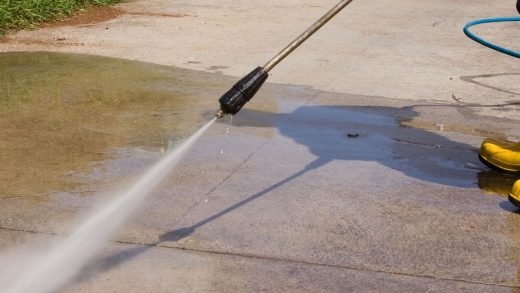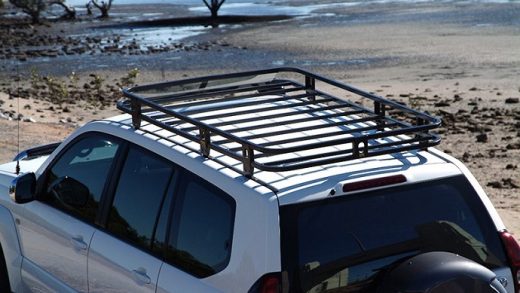Guide to Welding Magnets and Clamps: Get Better Looking, Cleaner and Stronger Welds
Welding metal workpieces together requires the right equipment, a lot of patience and a few simple necessities like welding position holders to ensure correct alignment. All welders aim for precise and strong welds, but without an extra pair of helping hands to set up hefty and bulky workpieces, or welding magnets or clamps to keep workpieces stable, your job is nigh impossible. These simple but effective welding accessories are necessities in simple everyday jobs, like repairing auto parts, erecting fences, or more complex construction work such as securing steel beams and frames.
Basics of Welding Magnets

Welding magnets are versatile tools used to hold metal workpieces during welding, soldering and brazing. They’re made of very strong, precision-engineered magnets able to clamp and hold metal pieces of varying shapes, weight and size. The magnets are set between two metal plates and come in varying shapes, angles and clamping forces. Ferromagnetic metals, iron, nickel, cobalt and their alloys are the main materials they’re made of.
The main role of welding angle magnets is to assist welders in initial setup. They help lift heavy workpieces, align them relative to the piece that needs to be joined and keep the assembly stable. Magnets can also be used in tack welding with larger structural components, or hold several pieces together in complex tasks.
Common Types
As mentioned magnets used for welding purposes come in a variety of shapes, can be set at different angles to tend to tight spaces, and with varying features that make the whole process faster and easier. Some of the more common types of welding magnets include:
- Adjustable magnets – if you require holding strength in pieces of different shapes, then adjustable magnets do the trick. They can be set at a defined angle, with ranges usually stemming from 30 to 270 degrees. Some also swivel through a full circle, offering the highest versatility across different tasks. Typical uses are in pipework, complex welding assemblies and metal fabrication.
- Arrowhead – these welding angle magnets are shaped to accommodate varying angles (usually 45, 90, 135 and 180 degrees) within a single tool.
- Square – or multi-angle magnets are similar but are have several fixed angles (30 and 60 degrees) and better suited to applications and angles with limited access or space.
- Corner – L-shaped corner magnets do as they say on the lid they’re set at 60 or 90-degree (right) angles and help join inside joints. Typical uses are with sheet metals.
- Switchable On/Off magnets – These help with welding speed and adjustability. The magnets can be switched on to hold onto heavier metal pieces or off during any necessary adjustments.
Choosing the right magnet will depend on the type of work you do. Magnets are common in everyday DIY repairs, when welding damaged automotive parts such as bull bars, in general fabrication of gates, fences, doors and various construction uses where metals play a vital part. Source magnets that are suited to workpieces, have the corresponding holding strength stated in kilos, and are durable enough to last in harsh conditions. Of course, you’ll also want magnets in the right angles, or a set of magnets, each at different angles to handle a variety of welding, brazing or soldering jobs.
Where Clamps Come In

When working with exceptionally heavy or awkwardly shaped workpieces, welders often combine stronger welding clamps and magnets. Again the main purpose is stability, a prerequisite for clean, precise and strong welds. Magnets top out at 50 kilos, so may not have the required holding strength. This is where clamps come into the picture. They can steadily hold larger and heavier metal pieces, and like magnets come in varying designs to suit different jobs.
The most common types are C or G utility clamps. These consist of two basic parts – a fixed top jaw (often set at a 90-degree angle) and a sliding arm tightened by turning a screw. The setup comfortably holds large metal pieces, including sheet metals, but can also be supplied with extras like pipe holders for more versatility. Common variations to this design are locking C-clamp pliers. They’re quicker to apply (with a quick-release mechanism) and adjust and are also easier on smoother metal surfaces with supplied padded jaws.
Other types are used in specialty tasks. This includes the range of pipe clamps, sheet metal pliers with larger non-slip jaws, spring clamps when working on lighter items and more. All are produced of treated steel for high durability, come with padded vinyl inserts on the handles for added operating comfort, and are adjustable to fit pieces of varying thickness.
Clamps can be sold separately for specific tasks. If you’re more of an all-rounder or deal with workpieces in various shapes and sizes, packaged deals with clamps of different types and sizes are a better deal. Combined with magnets at the right angles, clamps offer the versatility and coverage to weld items of any shape, weight or size. Get them at dedicated welding shops, or quality hardware stores.

















